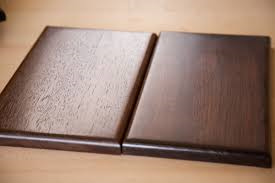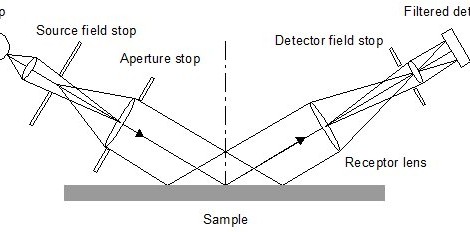When it's done wood finishing, i.e. layers of dyes, primers and varnishesThe purpose is not only aesthetic but also protective. The resulting film increases the resistance of wooden surfaces to knocks, stains and scratches. How well the film performs can be determined by determining the quality level.
Depending on the quality of the finishing products, the technology used, the compliance the indications in the technical data sheets and technologies, a film with certain characteristics and qualities is obtained. These can be evaluated using standardized tests at national, European and international level. The characteristics tested are related both to the aesthetic side, such as gloss or coating, and to the resistance of the film - resistance to staining, scratching, thermal shock.
Tests on the aesthetics of lacquer film
Degree of gloss – gloss - as it is known in factories, is one of the aesthetic properties of surfaces. Using it, finishes are classified into matt and glossy. The method for determining gloss is called Gardner and is based on light reflection. Gloss expresses the extent to which light is reflected by the varnish film. Values from 0 to 100 (percentage of reflected light radiation) can be obtained by measurement. These values allow differentiation in finish deep matt (natural effect - under 10), mat (10-35), semi-luxury (35-60), pike (60-90) and with high gloss (above 90).
Another aesthetic property is the degree of wood coating. From this point of view, the finish can be with closed pores or open. A closed-pore finish is one that completely covers the wood pore. In this case, the film is continuous, without those "holes" next to each pore. If the lacquer enters the pores, covering only the inner walls of the pore, the finish is open pore. The final film will also replicate the wood design, and therefore the pores will be visible.

Tests to determine varnish film strength
Resistance tests of the varnish film relate to the resistance to scratching, knocking, wear, tearing, thermal changes, staining, as well as to the expansion and contraction movements of the wood. The tests are carried out on finish samples with standardized dimensions, called epruvete, which represents a faithful reproduction of the finish used, with all its stages. The test specimens must be left for a minimum of 14 days prior to testing in order for the chemical reactions and drying to be finalized. The results obtained from these tests are graded from 1 to 5, where 1 represents the weakest resistance and 5 the best.
The Romanian standard that regulates the general quality conditions of transparent and opaque finish for interior furniture is SR 6009/2006. It is an adaptation of some older STAS taking into account also European regulations. This standard does not apply to wax and oil based finishes.
There are European (EN), international (ISO) and country standards. Below are some examples:
EN 12720 Resistance to cold wet sources (water stains, coffee, alcohol)
EN 438-1:2 Abrasion resistance
ISO 4211-4 Impact resistance
ISO 4211-3 Resistance to dry hot sources
SS 839117 Scratch resistance - Swedish standard
In factories there have always been, and always will be, simpler methods to determine the quality of the varnish film applied. A well-known method is to test film adhesion lacquer to wood. It's done with a 50-penny coin that you pull with the edge over the film. If a white trace remains, the film has no adhesion. If there is no trace or only a slight bevel without a white trace, the film has good adhesion.
If you know of other simple methods that can be used in factories to determine film quality, let's discuss them in the comments section.







































[...] Gloss expresses the extent to which a finished surface reflects light. Depending on the amount of reflected radiation, surfaces can be divided into matt and glossy. This property is practically transferred to the finished surface by the final coat of varnish applied, which is specified in the gloss level in the product code and technical data sheet. The gloss level is measured by glossmeter. [...]